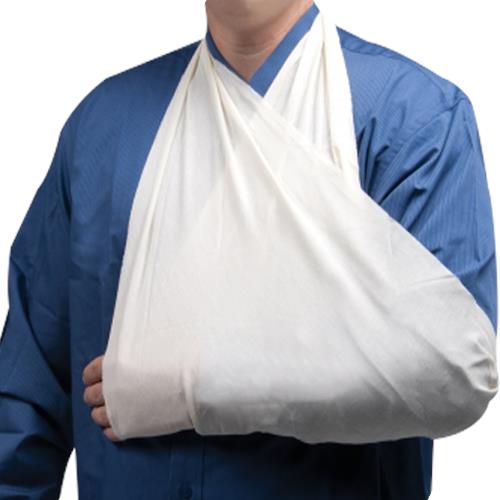Accidents can happen anytime, anywhere, and it's important to be prepared for them. Knowing how to make an arm sling with a triangular bandage is a useful skill that can come in handy in an emergency situation. An arm sling is used to immobilize the arm, shoulder, or collarbone, to prevent further injury or discomfort.

In this article, we will provide you with step-by-step instructions on how to make an arm sling with a triangular bandage, explain when to use an arm sling, and offer tips to ensure the best possible outcome for the injured person.
Materials Needed
The first step to making an arm sling is to gather the necessary materials. You will need a triangular bandage, safety pins (optional), and someone to help if possible.
Instructions
Step 1: Fold the triangular bandage
Start by folding the triangular bandage in half, forming a triangle. Place the bandage over the injured person's shoulder. With the point of the triangle hanging down behind their arm.
Step 2: Secure the bandage
Bring the two ends of the bandage up and over the injured person's shoulder and tie them together in a knot behind their neck. Make sure that the knot is tight enough to keep the bandage in place but not so tight that it causes discomfort.
Step 3: Make a loop
Take the point of the triangular bandage and bring it up towards the injured person's elbow. Secure the point of the bandage to the knot at the back of the neck with a safety pin, if necessary.
Step 4: Place the arm in the sling
Gently lift the injured person's arm and place it in the loop created by the bandage. The elbow should be supported by the sling, with the hand resting comfortably against the chest.
Step 5: Secure the sling
Wrap the remaining part of the bandage around the injured person's waist and tie it off in a knot at the side. This will help to keep the arm in place and prevent it from moving around.
Check out the practical video below
Tips for making sure the arm sling is secure and comfortable
It is important to ensure that the arm sling is secure and comfortable for the injured person. Here are some tips to help you achieve this:
Check the bandage regularly to ensure that it is still in place and not slipping down.
Make sure that the knot at the back of the neck is not too tight and does not cause discomfort.
Ensure that the injured person's hand is resting comfortably against their chest and is not too high or too low.
Check that the sling is not too loose or too tight, as this can cause discomfort and may even worsen the injury.
When to Use an Arm Sling
An arm sling can be used to immobilize the arm, shoulder, or collarbone, in case of an injury or discomfort. Here are some examples of when an arm sling may be necessary:
Fractures or dislocations of the arm, shoulder, or collarbone
Sprains or strains of the arm or shoulder
Surgery on the arm or shoulder
Properly using an arm sling can help to reduce pain, swelling, and further injury. It is important to follow the instructions above to ensure that the arm sling is secure and comfortable.
Conclusion
Knowing how to make an arm sling with a triangular bandage is an essential first-aid skill that can be used in emergency situations. Injuries can happen unexpectedly, and being prepared can make a difference in the outcome of the situation. We hope that this article has provided you with helpful instructions and tips on how to make an arm sling with a triangular bandage. We encourage you to practice making an arm sling ahead of time, so you feel confident and prepared to use this skill if an emergency arises. Remember to assess the situation before applying the arm sling and seek professional medical attention if necessary. It's also important to ensure that the sling is not too tight or too loose, as this can impede blood flow or cause discomfort for the patient. In addition to learning how to make an arm sling, it's a good idea to familiarize yourself with other first-aid skills and techniques, such as CPR and treating cuts and burns. Being prepared and knowledgeable in these areas can help you respond effectively in emergency situations and potentially save lives.

No comments:
Post a Comment